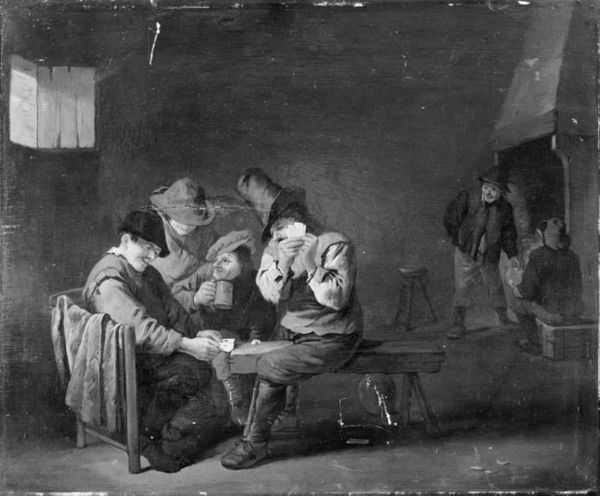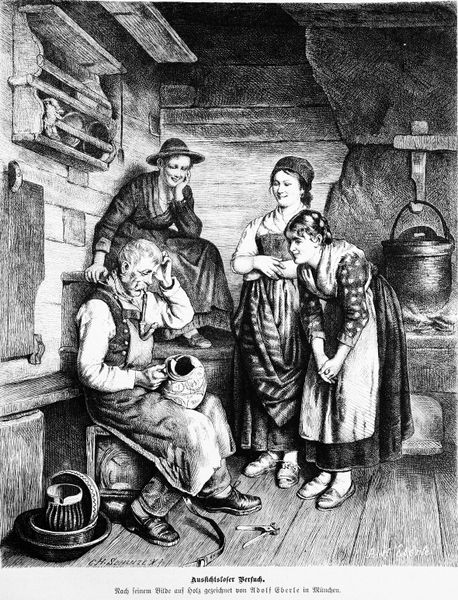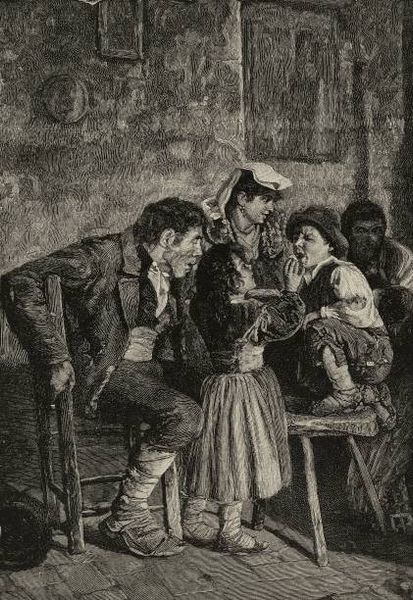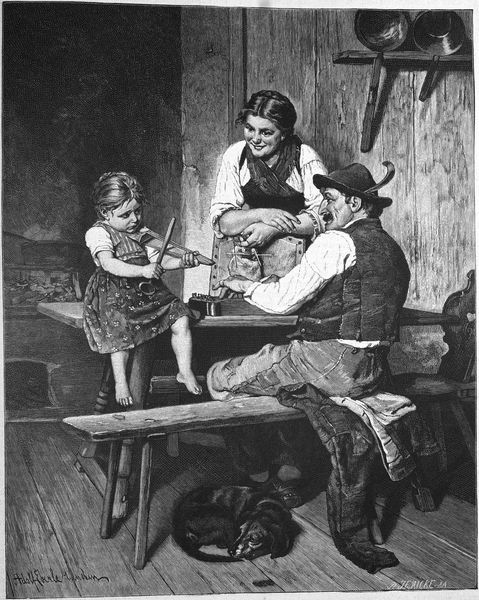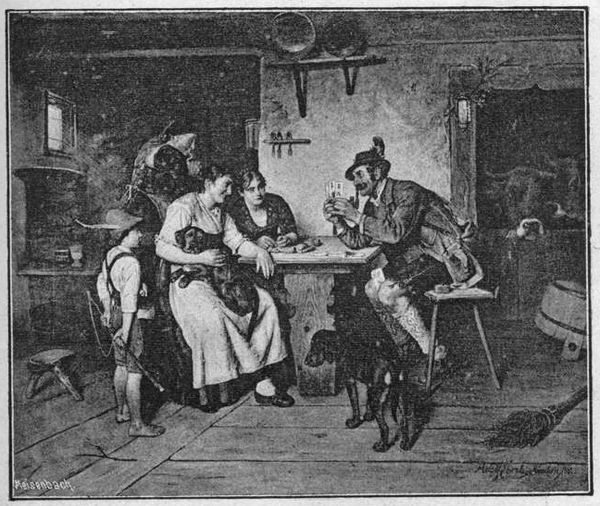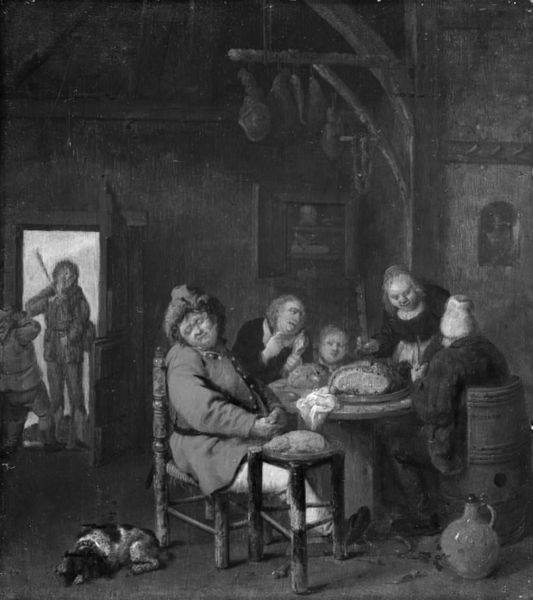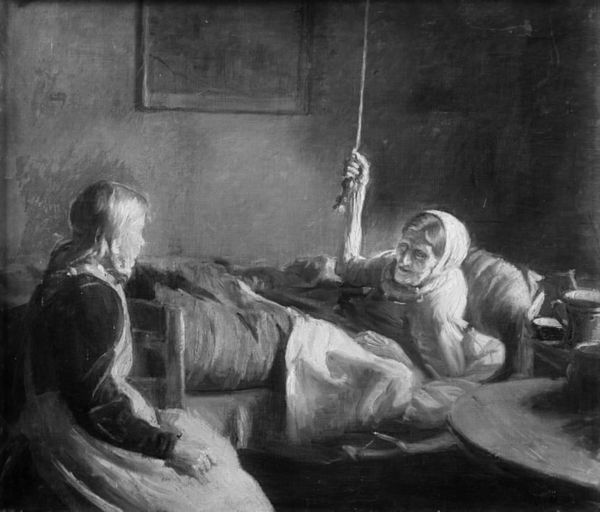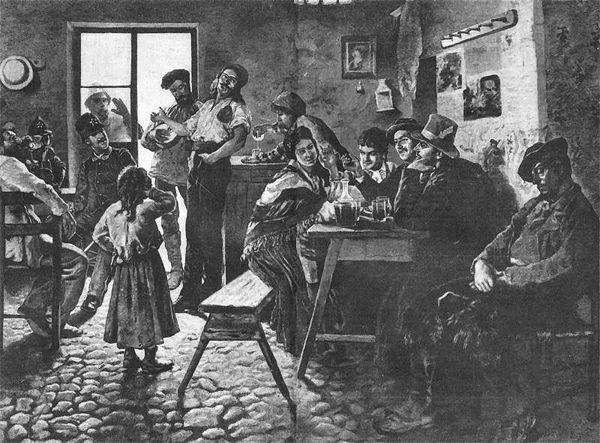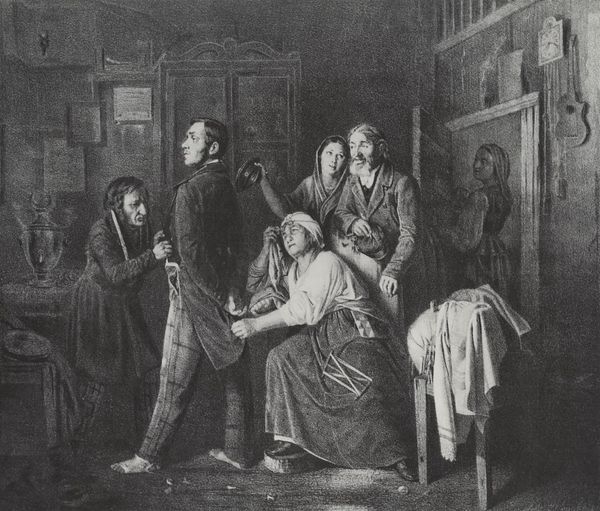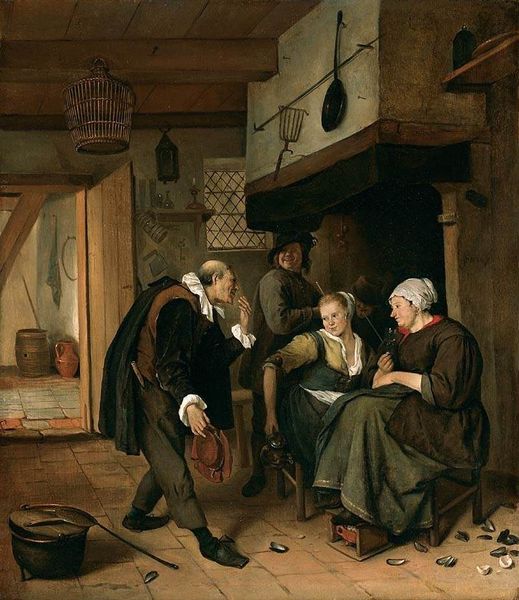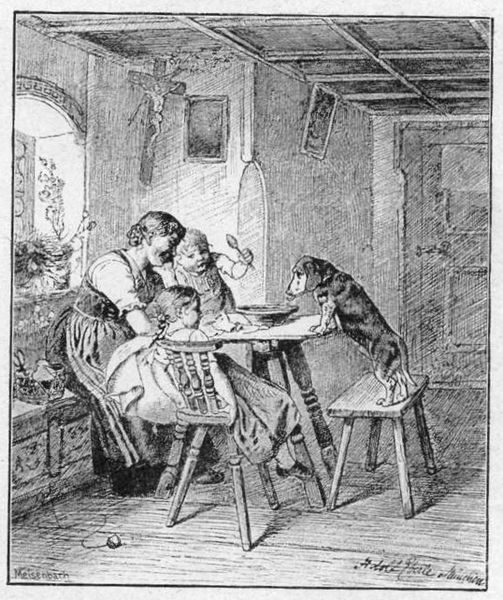
painting
#
portrait
#
painting
#
romanticism
#
genre-painting
#
monochrome
#
realism
#
monochrome
Dimensions: 64 cm (height) x 83 cm (width) (Netto)
Editor: Here we have Julius Friedländer's "The Lottery Prize," painted in 1848. It’s an oil painting, rendered in monochrome, depicting a family scene. I'm struck by the contrast between the father's exuberant joy and the mother’s… apprehension? What is your take on this painting? Curator: Consider the material conditions depicted. The monochrome palette speaks to the economic realities—were color pigments readily available or affordable for the artist or the depicted family? Also note the father's clothing, work overalls; this prize would be deeply impactful. What do the domestic tools and the state of disarray suggest about their labor? Editor: It’s true; everything appears quite humble. So the father’s elation might be directly tied to an opportunity to improve their material existence. The lottery, in that sense, offered an escape from daily hardship? Curator: Precisely. Consider the painting’s creation amidst the backdrop of industrializing Europe, with its attendant social disparities. What role did these lotteries play within the working class? Were they opportunities, distractions, or even instruments of social control? And look at the expressions on the faces. Do those offer further insights? Editor: The children seem cautiously hopeful, the mother burdened...perhaps with the awareness that fleeting luck is no substitute for systemic change. The monochrome really highlights the textures of the fabrics. Were these materials typical for working-class clothing at the time? Curator: Undoubtedly. The artist's choice to focus on the textures underscores the materiality of their lives – their clothing, tools, and surroundings as direct products of labor and their limited means. This careful depiction avoids romanticizing poverty. It is rooted in the concrete realities of their existence. What’s your reading now? Editor: I see the lottery win not just as a moment of individual fortune, but as a lens through which to examine labor, class, and the very fabric – quite literally – of 19th-century life. Curator: A welcome perspective.
Comments
No comments
Be the first to comment and join the conversation on the ultimate creative platform.
